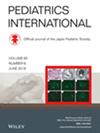鉴定新型疾病基因,揭示单基因疾病的病理机制
IF 1
4区 医学
Q3 PEDIATRICS
引用次数: 0
摘要
疾病是由遗传和/或环境因素引起的。对于儿科医生来说,了解仅由遗传因素引起的单基因疾病的病理机制非常重要,尤其是产前或儿童期发病的疾病。确定 "新型 "疾病基因并阐明基因组变化如何导致人类表型,将为尚未找到根本治疗方法的罕见疾病开发出新的治疗方法。基因组分析随着分析技术的发展而发展,从桑格测序(第一代测序)到比较基因组杂交、大规模并行短读数测序(使用下一代测序仪或第二代测序仪)和长读数测序(使用下一代测序仪或第三代测序仪)等技术。我与我的导师和众多合作者一起,利用传统技术和新技术研究人类遗传学,目前已鉴定出 60 多种疾病的致病基因。在此,我将概述旨在鉴定新型疾病基因的单基因遗传病基因组分析,以及根据疾病特征采用不同方法的几个实例。本文章由计算机程序翻译,如有差异,请以英文原文为准。
Identifying novel disease genes and revealing the pathomechanism of monogenic diseases
Diseases are caused by genetic and/or environmental factors. It is important to understand the pathomechanism of monogenic diseases that are caused only by genetic factors, especially prenatal‐ or childhood‐onset diseases for pediatricians. Identifying “novel” disease genes and elucidating how genomic changes lead to human phenotypes would develop new therapeutic approaches for rare diseases for which no fundamental cure has yet been established. Genomic analysis has evolved along with the development of analytical techniques, from Sanger sequencing (first‐generation sequencing) to techniques such as comparative genomic hybridization, massive parallel short‐read sequencing (using a next‐generation sequencer or second‐generation sequencer) and long‐read sequencing (using a next‐next generation sequencer or third‐generation sequencer). I have been researching human genetics using conventional and new technologies, together with my mentors and numerous collaborators, and have identified genes responsible for more than 60 diseases. Here, an overview of genomic analyses of monogenic diseases that aims to identify novel disease genes, and several examples using different approaches depending on the disease characteristics are presented.
求助全文
通过发布文献求助,成功后即可免费获取论文全文。
去求助
来源期刊

Pediatrics International
医学-小儿科
CiteScore
2.00
自引率
7.10%
发文量
519
审稿时长
12 months
期刊介绍:
Publishing articles of scientific excellence in pediatrics and child health delivery, Pediatrics International aims to encourage those involved in the research, practice and delivery of child health to share their experiences, ideas and achievements. Formerly Acta Paediatrica Japonica, the change in name in 1999 to Pediatrics International, reflects the Journal''s international status both in readership and contributions (approximately 45% of articles published are from non-Japanese authors). The Editors continue their strong commitment to the sharing of scientific information for the benefit of children everywhere.
Pediatrics International opens the door to all authors throughout the world. Manuscripts are judged by two experts solely upon the basis of their contribution of original data, original ideas and their presentation.
 求助内容:
求助内容: 应助结果提醒方式:
应助结果提醒方式:


